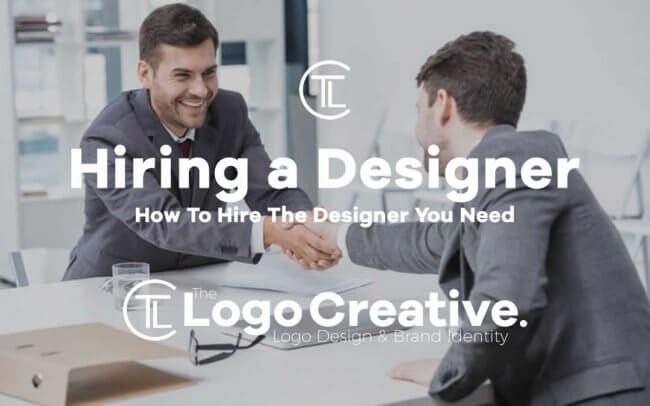This may be a bold (and perhaps inaccurate) statement, but consider this. Where would Nike be without the famous Swoosh? What about Google’s upbeat, colorful interfaces and Doodles? Or Apple’s minimalist silhouette of a half-bitten Macintosh apple?
Without these iconic logos (and each organization’s unique design aesthetics), each company might not be where it is today. Effective branding and marketing rely heavily on noteworthy design, something that any savvy entrepreneur understands. After all, as the Design Value Index demonstrates, companies that invest heavily in design tend to outperform industry peers—sometimes by as much as 228%.
Without a doubt, you need the right designer for your business. Whether you decide to hire a freelancer, an agency, or an in-house, full-time designer, understand that the selection process is straightforward and fairly clear-cut.
Read on to learn how to find the best designer possible and grow your business.
Table of Contents
Don’t rely solely on portfolios
Thanks to the internet, anyone can rip off the work of others, throw it in a portfolio, and call themselves a designer.
Yet plagiarism can be sniffed out. One entrepreneur conducted an experiment: he went on Fiverr (where freelancers post low-cost gigs starting at $5) for a logo. First, he browsed portfolios, finding that most collections featured little original work (repurposed clip art was common). He went ahead with the experiment anyway: three separate freelancers submitted designs–and he found that all three images came from stock templates.
Aside from plagiarism though, examining portfolios will yield some important insights. For one, you’ll understand a candidate’s style and capabilities—in essence, look past the artwork and understand their philosophy and work method. By carefully examining a portfolio, you’ll be able to understand a designer’s style and thought process, as well as any themes present in their work.
The point is this: you want to determine whether a promising designer can create unique solutions for your business problem. If your business has a clunky website, can this UX designer streamline it and create a post-modern web masterpiece? If your company feels like an outdated dad joke, can a talented illustrator update your brand for the digital age?
But don’t just stop there ask candidates about their designs and the inspiration behind those particular choices. This way, you have a better understanding of the designers creative process, and can determine how (and if) their skills are compatible with your aims and vision.
In fact, the best creatives (be they logo designers, copywriters, or video editors) are able to get on the same page as their clients quickly–a mindmeld. Ideally, your designer will understand your company’s brand and personality and express this through design. Remember that the best designs, be it a logo, a website, or a product, are the most tangible, physical manifestations of your company.
Given the high stakes, it may help if you start with a sample project, an audition of sorts. This will allow you to see what the designer can do without having to commit to anything long-term. If their work amazes you, consider moving forward with the business relationship. If it’s not your style or simply poor design, move on to the next potential hire.
However, if you do decide to audition a designer, be sure to pay them for their time and labor. It’s only fair.
Communicate expectations and goals
Whether you need a designer for one big project, or hope to bring on someone part- or full-time for continuous work, you must actively communicate goals and objectives. Obviously, for a freelancer or an agency, you don’t necessarily need a full job description; nevertheless, writing one will help you narrow your parameters and understand your needs.
In particular, be clear about qualifications. How many years of industry experience would you prefer? Sample skills would include a deep knowledge of color theory and typography, and working knowledge of UX and UI. Note that some designers are more specialized; UX designers, who work on how users interact with websites and mobile apps, will have a different set of skills than art directors, who collaborate with copywriters on ad campaigns in a variety of mediums, like print or mobile.
By setting clear expectations, you can filter out unqualified designers early on. You also should think about what resources you’re willing to use to train and develop the designer. For instance, imagine you are faced with an otherwise great candidate with one problem: they are unfamiliar with Adobe Illustrator. Are you willing to allocate resources so they can learn? Can you spare the time and money to get this otherwise stellar candidate up to speed? Or is it time to look elsewhere?
Decisions like this should be made on a case-by-case basis, yet it’s important to have some guidelines. Going into an interview, you should have a good idea of which qualifications are ‘must-haves’ and which skills can be covered by on-the-job training (perhaps at your expense). This will streamline the process and help you hone in on the best candidate.
Promote brand values and company culture
During the interview process, it’s important to address your company’s brand and target audience. It may be a surprise, but a 2015 Achievers’ survey found that a staggering 61% of workers don’t really grasp their company’s mission statement. If you do the math, that’s a significant proportion of employees who are disengaged, and perhaps running on autopilot.
Given that designers are charged with building the most outward-facing aspects of your business (such as a website or a product), it’s incredibly important for them to be plugged into your company’s vision. Otherwise, a designer’s work will fail to fully reflect your company’s personality and brand–a key shortcoming that can seriously hurt revenue.
Emphasizing your company’s brand and culture to the designer you may hire is also a good way to see if they’re a fit. For example, you may find that one candidate meets all the qualifications, but doesn’t seem too interested in the company. Another candidate may not have all the experience you’d like, but they have a noticeable passion for the brand. Between the two, who would you choose?
Bear in mind that this cultural fit is important, and not just for full-timers. Ideally, you want to develop a long-term relationship with freelancers, as working with a small handful of trusted, familiar designers help you save valuable time. You won’t have to waste hours sifting through portfolios or going back and forth on revisions. Instead, you’ll have someone who just gets it–a proven, experienced designer who can bring your dreams into living color.
Use networks, both online and off
The vast majority of jobs are filled via networking. You can start your hunt for a suitable designer by asking your employees, friends, business partners, and others for references–specifically those they’ve worked with in the past. This is both cheaper (and more trustworthy) than hiring a recruiter or advertising online.
Otherwise, go online. Dribbble is perhaps the most popular platform for finding designers internationally. Behance is a solid network of great designers with a much higher standard than mass-market sites like Fiverr or Upwork.
Ultimately, when it comes to matching your company with a designer, understand that this process takes time and care. Finding a designer goes beyond just a snazzy portfolio and impressive past work (though these are also important); instead, you need to find a person who has a suitable design philosophy, similar aesthetics, and lastly, a connection to your brand.
 Author Bio
Author Bio
Anthony Wood is the Global Managing Director of Shillington Education, an intensive, immersive design school with campuses in Sydney, New York, London, Manchester, Melbourne, and Brisbane.


